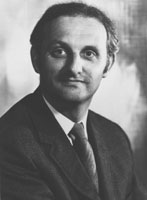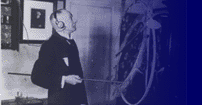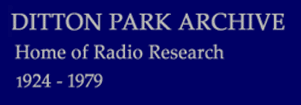Robert Watson-Watt supervises research on the study of atmospherics
at the Aldershot Wireless Station.
Watson-Watt's Experimental Hut at
Aldershot.1919.
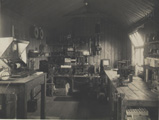
The Radio Research Board of the Department of Scientific and Industrial Research
is formed with Admiral of the Fleet, Henry Jackson as the Board's first Chair.
Four sub-committees on propagation, atmospherics, direction
finding and thermionic valves are established and early members include
E.V.Appleton, R.L.Smith-Rose and R.A.Watson-Watt.
Atmospheric research is undertaken at the Aldershot Wireless Station while direction
finding work begins in the West Park of the Compass Observtory at
Ditton Park, Slough.
Admiral of the Fleet Henry Jackson.

1924
The War Department reoccupies the Aldershot site so Watson-Watt moves his research
and equipment to the North Park at Ditton Park, Slough.
The three research areas of the Radio Research Board are: Atmospherics,
Direction Finding Investigations and Field Strength Measurements.
Watson-Watt's apparatus for studying waveforms
of atmospherics.

1925-27
Edward Victor Appleton and his co-workers prove the existence of an ionised relfecting
layer at the height of about 100km. They are soon to discover a second layer at a
height of 200km. Watson-Watt provides the name 'Ionosphere' in 1926.
Sir Edward Victor Appleton
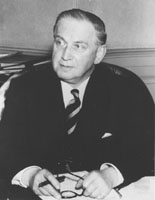
1927
On December 1st 1927 the Radio Research Station is formed following
the unification of research on atmospherics, direction finding and field strength
measurements. Robert Alexander Watson-Watt is made Superintendent.
A few days later, the Station suffers considerable losses to its equipment and
resources as a fire burns down the 210 foot tower in North Park.
Wreckage of tower in North Park
following the fire of 1927.

On September 20th 1932 a continuous sequence of ionospheric soundings begin
at Ditton Park.
E.V.Appleton, R.Naismith and W.C.Brown of the Radio Research Station visit Tromso,
Norway to carry out further Ionospheric investigations as part of the Second
International Polar Year.
Polar Ionosphere Investigations. Edward Appleton
and Robert Naismith. 1932.
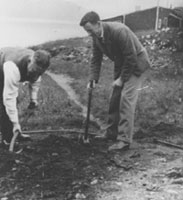
1933
The Radio Research Station is combined with the Wireless Division of the
National Physical Laboratory to become the Radio Department, N.P.L.
Pulse Ionosonde receiver designed by L.H.
Bainbridge-Bell.1933.
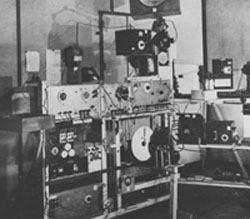
1935
Invention of Radar.
February 12th 1935 Watson-Watt prepares a draft memorandum entitled,
'Detection and Location of Aircraft by Radio Methods.' The report
explains how detection by relfected radio energy is possible.
On February 29th 1935 an experiment to test the theory was conducted
by A.F.Wilkins using apparatus from Ditton Park. The results were creditable
and so began great developments in air defence.
A.F.Wilkins in van later used for Radar
experiments. c.1933.

1938-39
Development of the Ionospheric Forecasting Service to aid long distance
communication is of great importance to the Services during World War II.
At the end of the war, fewer demands from the Services result in the Station
revising their programme of work. Plans to increase the number of outstations
and expand the Ditton Park site are made.
Ionospheric Observatory. Ditton Park. 1948.
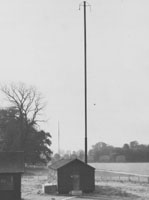
The Radio Research Organization is formed with Reginald Leslie Smith-Rose as the
first Director.
Reginald Leslie Smith-Rose. October 1948.
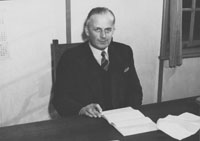
Building work to expand the laboratory at Ditton Park begins in 1954 and completed in
1956.
On June 20th 1957 Sir Edward Appleton formally opens the new buildings.
North view of the new buildings at Ditton Park. 1956.
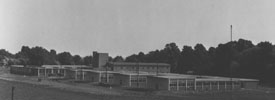
1957-58
The International Geophysical Year takes place from July 1st 1957 to December 31st
1958.
The World Data Centre is established at Ditton Park, Slough for the collection and
exchange of ionospheric information.
On October 4th 1957 the first artifical earth satellite, Sputnik I, begins to orbit
the Earth. A small experiment at Ditton Park in which bearings were taken from the
satellite transmitter using a cathode-ray direction finder marks the beginning of
extensive research, involvement and contribution to space science from the Station.
Link to World Data Centre website

R.L.Smith-Rose retires and John Ashworth Ratcliffe becomes Director of the Radio Research
Organization.
The work of the Station is focused on ionospheric and tropospheric research.
Listen to the speeches (mp3) made at the retirement of R.L.Smith-Rose:
Listen to the speech of the new Director, J.A.Ratcliffe:
John Ashworth Ratcliffe. Director.1960-66.
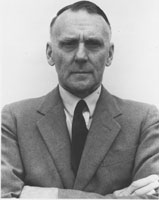
1965
The importance of space research at Ditton Park is reflected in the name change of the
laboratory to the 'Radio and Space Research Station' on April 1st 1965. Responsibility of
the Station is transferred from the Department of Scientific and Industrial Research to the
Science Research Council.
John Arthur Saxton becomes Director in 1966.
John Arthur Saxton. Director. 1966-77.
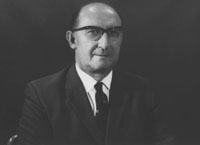
1973
The Station is renamed the Appleton Laboratory on November 7th 1973.
There is increasing collaboration with Universties and Laboratory Scientists on
research projects and work begins on satellite instrumentation.
F.Horner becomes Director of the Laboratory in 1977.
F.Horner. Director. 1977-79.
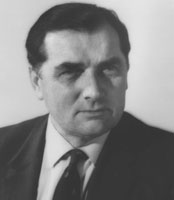
The Appleton Laboratory merges with the Rutherford Laboratory at Chilton in
Oxfordshire to become the Rutherford Appleton Laboratory on September 1st 1979.
The two Laboratories are able to combine their expertise and facilities
in radio, space, engineering, technological and computing research.
J.T.Houghton becomes Director Appleton within the merged Laboratory in 1979.
J.T.Houghton. Director. 1979.
